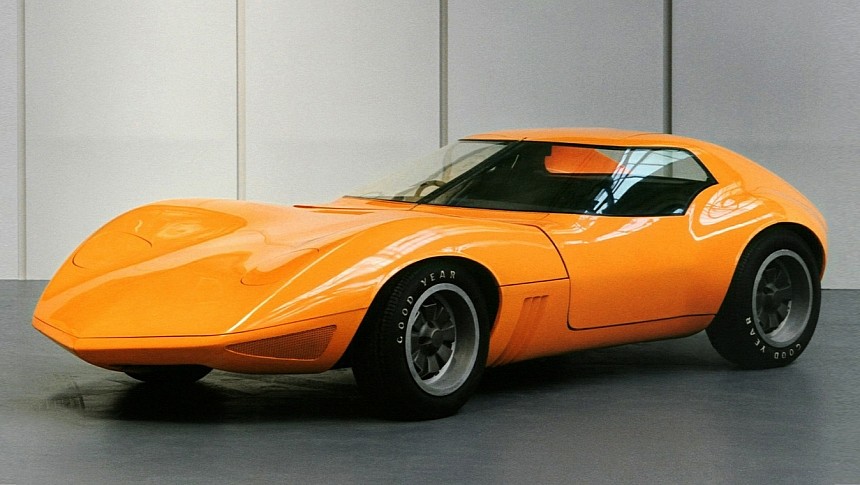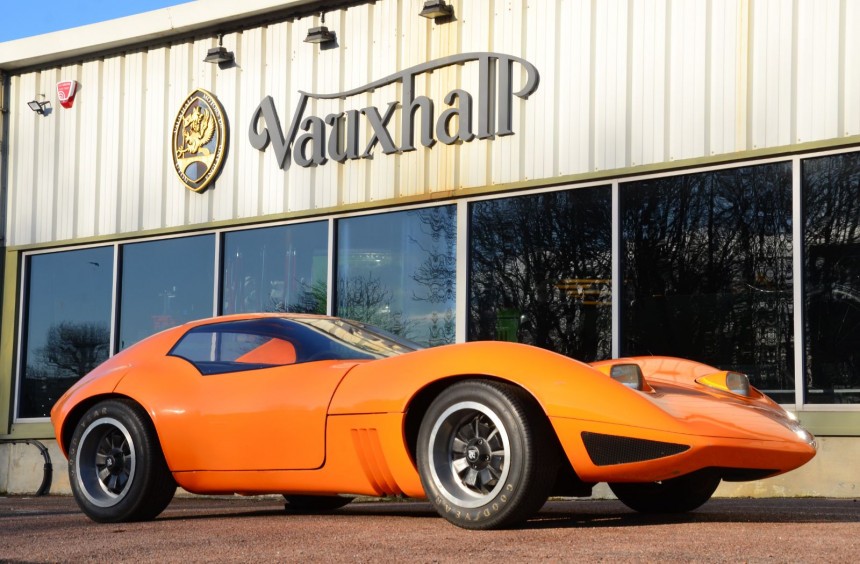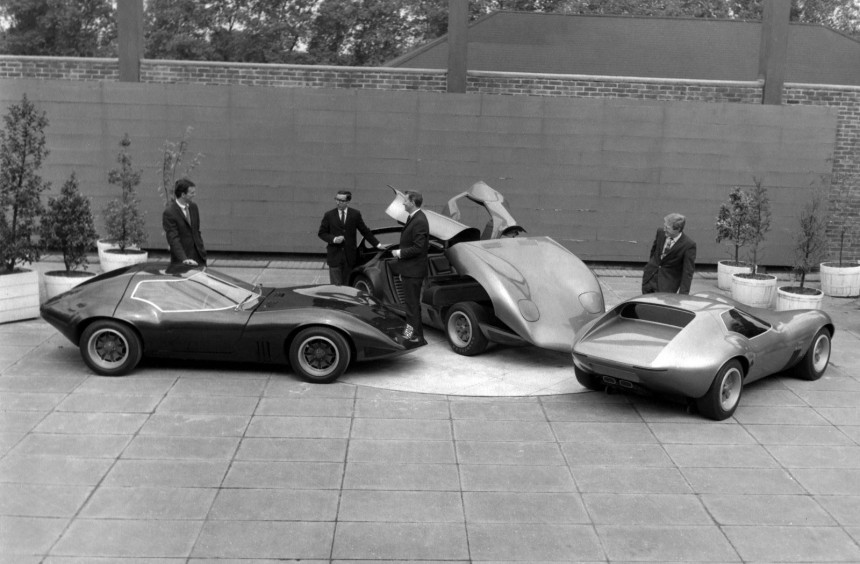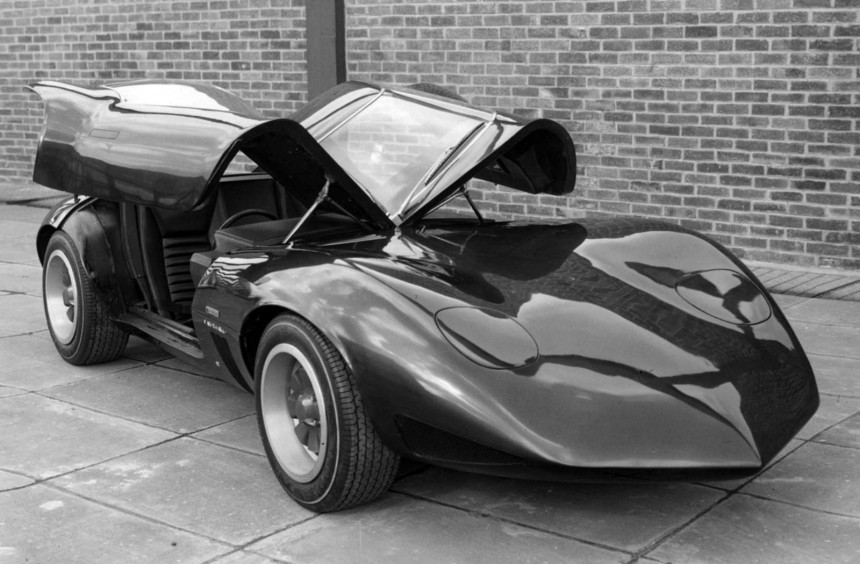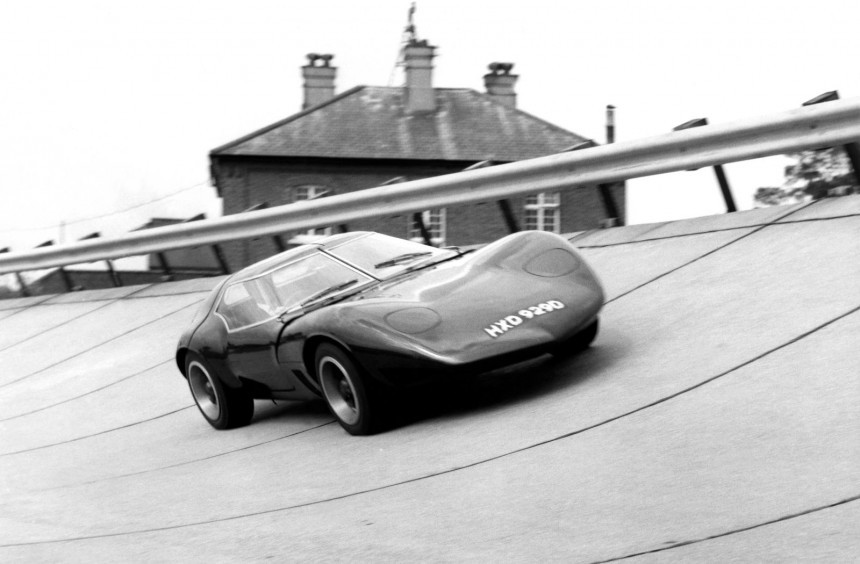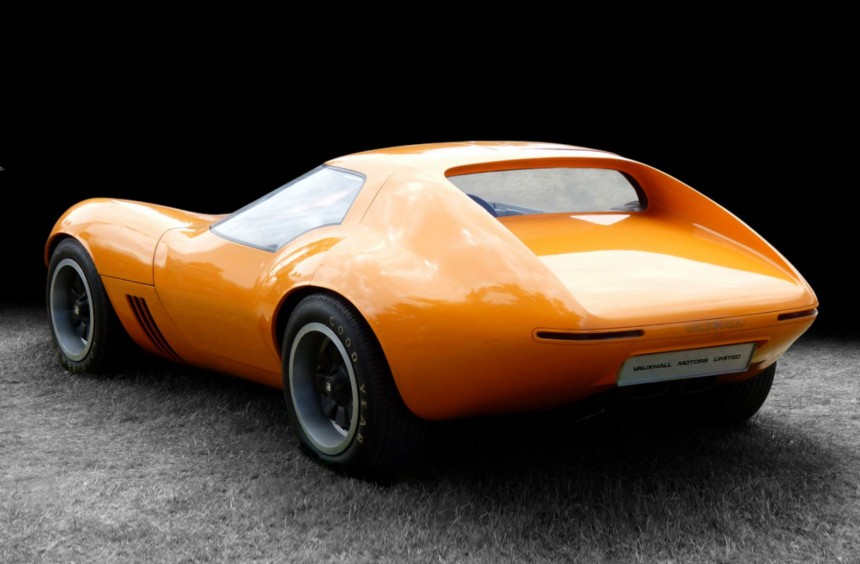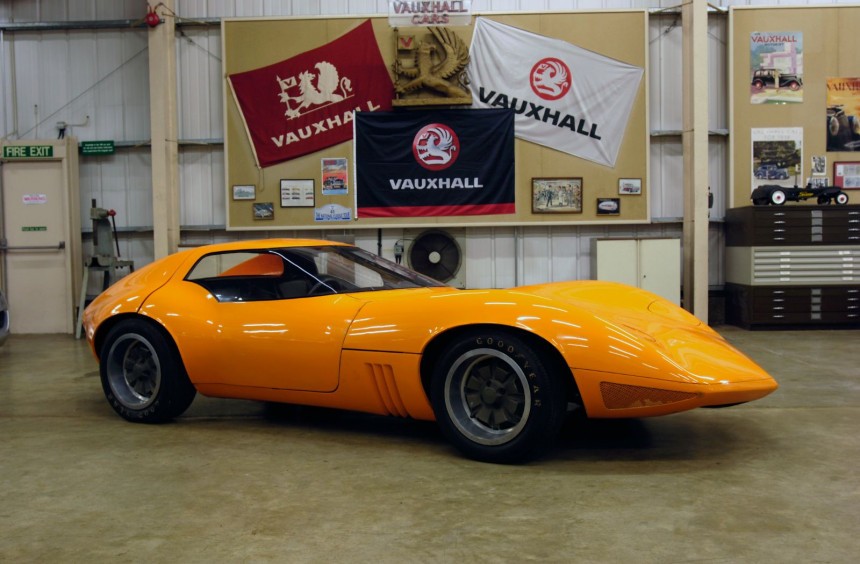In 1966, the British GM division, known for its mundane models, surprised everyone with one of the most breathtaking concept cars developed in Europe during that decade.
One of the UK's oldest car brands, Vauxhall, was established in 1897, but during its first six tears of existence, it produced pumps and marine engines.
In 1903, the company released its first automobile, and over the next two decades, it became one of the UK's most established luxury carmakers.
But despite its high-quality products, Vauxhall began navigating murky financial waters, and in 1925, it was saved by American corporation General Motors.
As a GM division, the British brand gradually shifted its focus from the upscale portion of the market to mid- and entry-level products.
For a significant portion of its history under American tutelage, Vauxhall has produced rebadged, right-hand-drive versions of Opel models - another European brand owned by Opel.
The same philosophy applies to the British manufacturer's current models, albeit both brands are now under the Stellantis corporate umbrella.
But while Vauxhall has mostly delivered boring, rebadged products over the last half a century, during the 1960s, it produced one of the most exciting concept cars that Europe had ever seen.
By the first half of the 1960s, it was becoming clear that rebadging mostly mundane Opel products was the path of the future for Vauxhall.
Nevertheless, the brand's Design and Engineering Center was brimming with young talent eager to create something unique.
In 1965, at the Paris and Frankfurt motor shows, their German colleagues (and rivals) from Opel introduced a new sports car concept that would later become the mass-produced Opel GT.
Itching to show that they could build a far more exciting car than what the press called "the baby Corvette," the talented crew at Vauxhall's Design and Engineering Center convinced management to greenlight a new project that became known as eXperimental Vauxhall Research (XVR).
Working under the leadership of design chief David Jones, the talented team that included future automotive design all-stars like Wayne Cherry, Leo Pruneau, John Taylor, and Judd Holcomb got to work.
Impressively, in just under six months, they had not one but three examples of the stunning concept ready for the car show circuit.
Two were full-size, rolling mockups fitted with fiberglass bodies, while the third received a metal body and a fully functional powertrain.
The latter, finished in a glossy dark green reminiscent of the traditional British Racing Green, was unveiled in March 1966 at the prestigious Geneva Motor Show, where it attracted huge crowds to the Vauxhall booth.
As some of the team members involved in the project were born in the US and started their careers at GM's headquarters, the XVR concept drew inspiration from America's favorite sports car: the Chevrolet Corvette.
Revealed a few months before the XVR project started, the Mako Shark II served as the inspiration for Vauxhall's gorgeous concept.
However, just the front portion of the body with its pop-up headlights was inspired by Bill Mitchell's now-iconic show car. From the firewall towards the short rear end, the design was all original.
Sensibly smaller than any Corvette, the dramatically low-slung XVR's most impressive visual features were the huge gullwing doors with curved windows.
Though the windows were fixed and made up half of the windshield, leading to a split--windshield that must have impaired visibility, when the doors swung up at the Geneva Show, the jaws of those in attendance dropped to the floor.
The two-seater's futuristic body was mated to an innovative custom-built backbone-style chassis equipped with both novel and existing components.
For example, the front suspension was a mix of production parts borrowed from the Victor and Cresta production models, while the rear suspension was an experimental independent system.
The front disc brakes were also taken from the aforementioned production models, whereas those hidden behind the wide rear wheels were a novel design.
The green Geneva model was equipped with a pre-production version of Vauxhall's Slant Four that was mounted between the cockpit and the front axle, making the XVR a front-mid-engine sports car.
Though the SOHC four-cylinder was advanced for its era and went on to inspire the great Lotus 900 series, at the time, it was nothing special in terms of power.
With around 100 hp on tap, the aggressive-looking Mini Mako Shark II was by no means a top performer. Though detailed figures were never released, Vhauxall stated that the XVR could reach a top speed of over 100 mph (160 kph).
After wowing the crowd in Geneva and touring Europe's most famous car shows, the three XVR concepts returned home to England.
One of the rolling mockups was intentionally destroyed, as was common practice back then.
The functional car was homologated for road use and became a test mule for the Slant-Four, but following a severe crash, it too was destroyed since a full restoration meant lost time and money.
Fortunately, the third example avoided a similar faith. Initially, it found a home at the Vauxhall Heritage Centre, and today, it's on display at the British Motor Museum in Gaydon, Warwickshire.
Though it never made it into production and didn't really influence any of Vauxhall's future production cars, the XVR served as an inspiration for other famous concept cars.
One was the Australian Torana GTR-X, unveiled in 1970, while the other was the Vauxhall SRV, which also debuted in 1970.
Though it shared no similarities to the XVR, the SRV was conceived by Wayne Cherry, who rose to fame after working on the XVR project.
Moreover, if it wasn't for the success of the mini Mako Shark II, Vauxhall management would probably never have allowed the development of the SRV, which, to this day, remains one of the most impressive concept cars ever built.
In 1903, the company released its first automobile, and over the next two decades, it became one of the UK's most established luxury carmakers.
But despite its high-quality products, Vauxhall began navigating murky financial waters, and in 1925, it was saved by American corporation General Motors.
As a GM division, the British brand gradually shifted its focus from the upscale portion of the market to mid- and entry-level products.
For a significant portion of its history under American tutelage, Vauxhall has produced rebadged, right-hand-drive versions of Opel models - another European brand owned by Opel.
The same philosophy applies to the British manufacturer's current models, albeit both brands are now under the Stellantis corporate umbrella.
But while Vauxhall has mostly delivered boring, rebadged products over the last half a century, during the 1960s, it produced one of the most exciting concept cars that Europe had ever seen.
Developed to spite Opel
Nevertheless, the brand's Design and Engineering Center was brimming with young talent eager to create something unique.
In 1965, at the Paris and Frankfurt motor shows, their German colleagues (and rivals) from Opel introduced a new sports car concept that would later become the mass-produced Opel GT.
Itching to show that they could build a far more exciting car than what the press called "the baby Corvette," the talented crew at Vauxhall's Design and Engineering Center convinced management to greenlight a new project that became known as eXperimental Vauxhall Research (XVR).
Developed in less than six months
Impressively, in just under six months, they had not one but three examples of the stunning concept ready for the car show circuit.
Two were full-size, rolling mockups fitted with fiberglass bodies, while the third received a metal body and a fully functional powertrain.
The latter, finished in a glossy dark green reminiscent of the traditional British Racing Green, was unveiled in March 1966 at the prestigious Geneva Motor Show, where it attracted huge crowds to the Vauxhall booth.
Inspired by the Mako Shark II Corvette
Revealed a few months before the XVR project started, the Mako Shark II served as the inspiration for Vauxhall's gorgeous concept.
However, just the front portion of the body with its pop-up headlights was inspired by Bill Mitchell's now-iconic show car. From the firewall towards the short rear end, the design was all original.
Sensibly smaller than any Corvette, the dramatically low-slung XVR's most impressive visual features were the huge gullwing doors with curved windows.
Though the windows were fixed and made up half of the windshield, leading to a split--windshield that must have impaired visibility, when the doors swung up at the Geneva Show, the jaws of those in attendance dropped to the floor.
It wasn't as fast as it looked
For example, the front suspension was a mix of production parts borrowed from the Victor and Cresta production models, while the rear suspension was an experimental independent system.
The front disc brakes were also taken from the aforementioned production models, whereas those hidden behind the wide rear wheels were a novel design.
The green Geneva model was equipped with a pre-production version of Vauxhall's Slant Four that was mounted between the cockpit and the front axle, making the XVR a front-mid-engine sports car.
Though the SOHC four-cylinder was advanced for its era and went on to inspire the great Lotus 900 series, at the time, it was nothing special in terms of power.
With around 100 hp on tap, the aggressive-looking Mini Mako Shark II was by no means a top performer. Though detailed figures were never released, Vhauxall stated that the XVR could reach a top speed of over 100 mph (160 kph).
Only one of the three concepts survived
One of the rolling mockups was intentionally destroyed, as was common practice back then.
The functional car was homologated for road use and became a test mule for the Slant-Four, but following a severe crash, it too was destroyed since a full restoration meant lost time and money.
Fortunately, the third example avoided a similar faith. Initially, it found a home at the Vauxhall Heritage Centre, and today, it's on display at the British Motor Museum in Gaydon, Warwickshire.
The XVR went on to inspire other iconic concept cars
One was the Australian Torana GTR-X, unveiled in 1970, while the other was the Vauxhall SRV, which also debuted in 1970.
Though it shared no similarities to the XVR, the SRV was conceived by Wayne Cherry, who rose to fame after working on the XVR project.
Moreover, if it wasn't for the success of the mini Mako Shark II, Vauxhall management would probably never have allowed the development of the SRV, which, to this day, remains one of the most impressive concept cars ever built.
